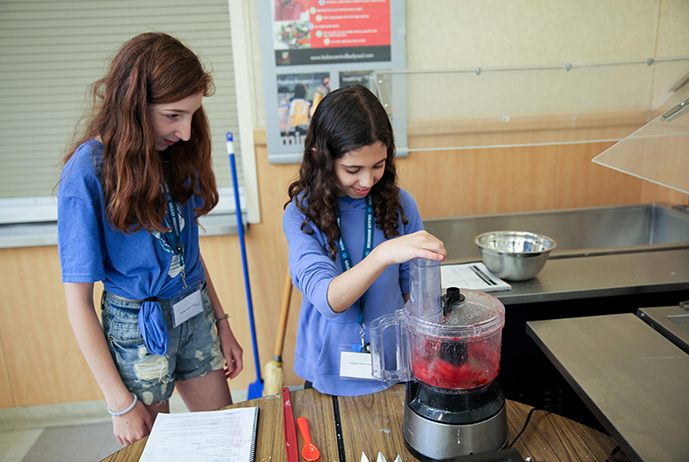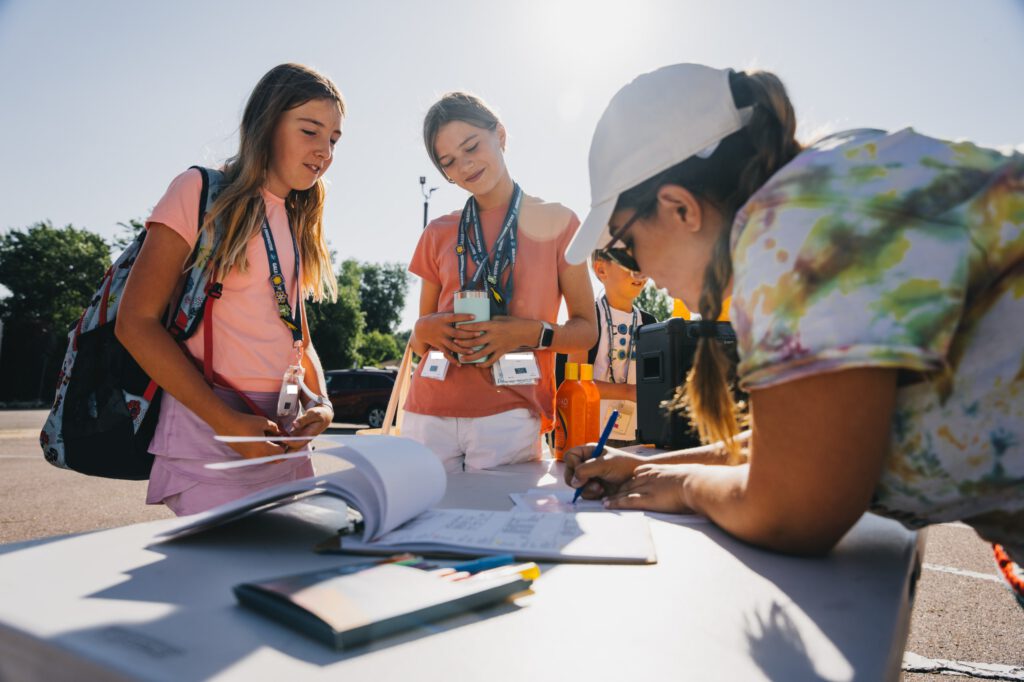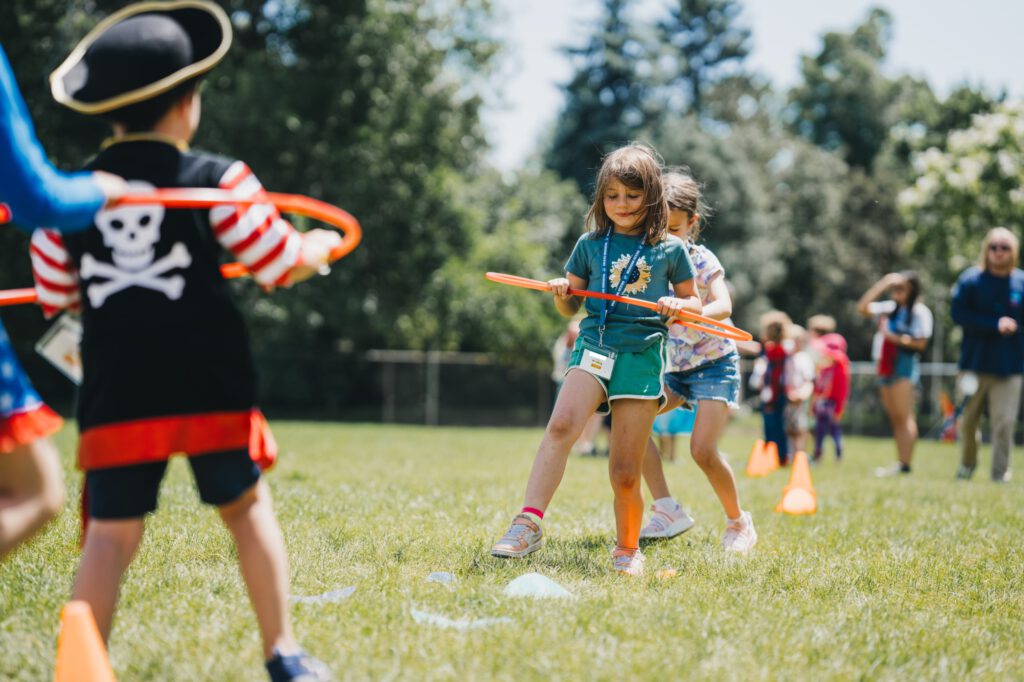Thanksgiving is truly one of our favorite holidays. Food, family, friends, and fun come together for the ultimate combination of reflection and revelry. For kids, there are crafts and stories, and chances to help prepare the food and decorate the table.
Veraquest research group asked a group of respondents who celebrate Thanksgiving to weigh in on this historical American holiday. 47% of those surveyed reported seeing family and friends as their favorite aspect of the holiday. Food came in second, selected by 30% of respondents.
Beyond the celebrated food, Thanksgiving is a wonderful reminder of all we have to be grateful for. This holiday provides the perfect opportunity to refocus as a family, to express our thanks, and to share some gratitude activities with kids.
The Benefits of Gratitude
Some scientists believe that gratitude is an evolutionary mechanism embedded in our DNA. Gratitude—that feeling and expression of appreciation for the good in our lives—is really good for us. The benefits of gratitude can have profound effects on our lives. Besides giving us a sense of well-being as we come to appreciate what we have, gratitude can increase optimism, empathy, and happiness.
Physical health
Being grateful for what we have helps us to overcome negative feelings, even aches and pains. It also prompts us to take better care of ourselves, as we tend to be more optimistic about our longevity. The benefits may extend to stress levels, blood pressure, and the immune system.
Psychological well-being
People focused on gratitude see more of the positive in their lives. A study that measured brain activity objectively via magnetic resonance imaging (MRI) demonstrated that gratitude has long-lasting positive effects on the brain, suggesting improved mental health over time.
Sleep
Preliminary research into the connection between gratitude and better sleep suggests a positive correlation. When people fill their pre-sleep period with positive thoughts, such as writing in a gratitude journal, it may have a soothing effect on the nervous system, quieting the mind and easing the transition from wakefulness to sweet dreams.
Relationships
Beyond the fact that it is good manners, acknowledging another person’s kindness or goodwill with thanks strengthens and perpetuates the bonds between us. Gratitude increases prosocial behaviors—those which help us to build and maintain meaningful relationships with others.

Celebrating and Practicing Gratitude as a Family
With its focus on giving thanks, the holiday season is a natural time for families to practice gratitude. These activities can be informal and impromptu or preplanned and rehearsed. The important thing is to model gratitude and share it with kids so that you can reap the benefits as a family. Here are a few ideas for how to get started.
Talk about gratitude as a family
Seizing this teachable moment to elaborate on gratitude gives each family member the opportunity to express their thanks outwardly.
A fun way to do this is to incorporate these expressions into the holiday table decorations. Kids might prepare color-coordinated strips of construction paper and magic markers to present to guests as they arrive. Each guest then records something for which they are thankful on their strip. Kids can loop the strips together creating a paper chain with which to decorate the dinner table or dining room. As newcomers arrive, add additional loops as needed.
Gratitude letters and gratitude visits
There is something very tangible about putting gratitude on paper regardless of whether the letter is delivered or not.
Consider a gratitude letter writing activity, then maybe pay a visit to deliver the letter or express gratitude in person to someone who has been kind or helpful to your family. Modeling appreciation in this way is a visible representation of gratitude in real life.
Learn about the Thanksgiving Address
November is Native American Heritage Month, and Native Americans figure prominently in our Thanksgiving lore. But rather than focusing on historical accounts, consider learning about how some First Nation and Native American communities voice regular expressions of gratitude today.
The Haudenosaunee (Ho-den-o-sho-nee) open and close every gathering or social event with the Thanksgiving Address, which teaches gratitude, mutual respect, and conservation. It promotes eco-consciousness and responsibility by reminding them of their connection to the natural world. You can read through it with family members, each taking part, then talk about how we can conserve and sustain our Earth.
Share gratitude stories
What better way to learn about gratitude than through a shared read-aloud?
Younger readers might enjoy titles like Gratitude Soup, Grateful: A Song of Giving Thanks and The Giving Tree, while older kids will appreciate Thanks a Million, an anthology of poems by Nikki Grimes. Giving Thanks provides a kid-friendly version of the Haudenosaunee Thanksgiving Address.
Be sure to talk about the stories afterward to help kids can make connections with their own experiences.
Consider the emphasis on food
This food-focused holiday is a natural opportunity to discuss food insecurity in your local community and around the world. It is the perfect time to volunteer or make a donation as a family to a local food bank or pantry.
To impact hunger farther from home, think about supporting an organization like A Well-fed World (AWFW). Through four options for gift-giving, Plants-4-Hunger allows donors to support sustainable vegan feeding and farming. Since animal farming is a top greenhouse gas producer, getting involved with AWFW can potentially impact world hunger, humane treatment of animals, and climate change. Allowing kids to contribute part of their allowance or raise money to help out, helps them turn compassion into action.
Making Gratitude a Daily Practice
Sincere gratitude has an impact on kids and parents alike. With so many benefits, it makes sense to work gratitude into our daily lives and encourage our kids to do the same. The Thanksgiving season is an ideal opportunity to introduce this practice and emphasize the positive aspects of life. Making time for gratitude activities with kids will not only bring us closer as a family but will establish a mindset of appreciation and a healthy foundation for all.



